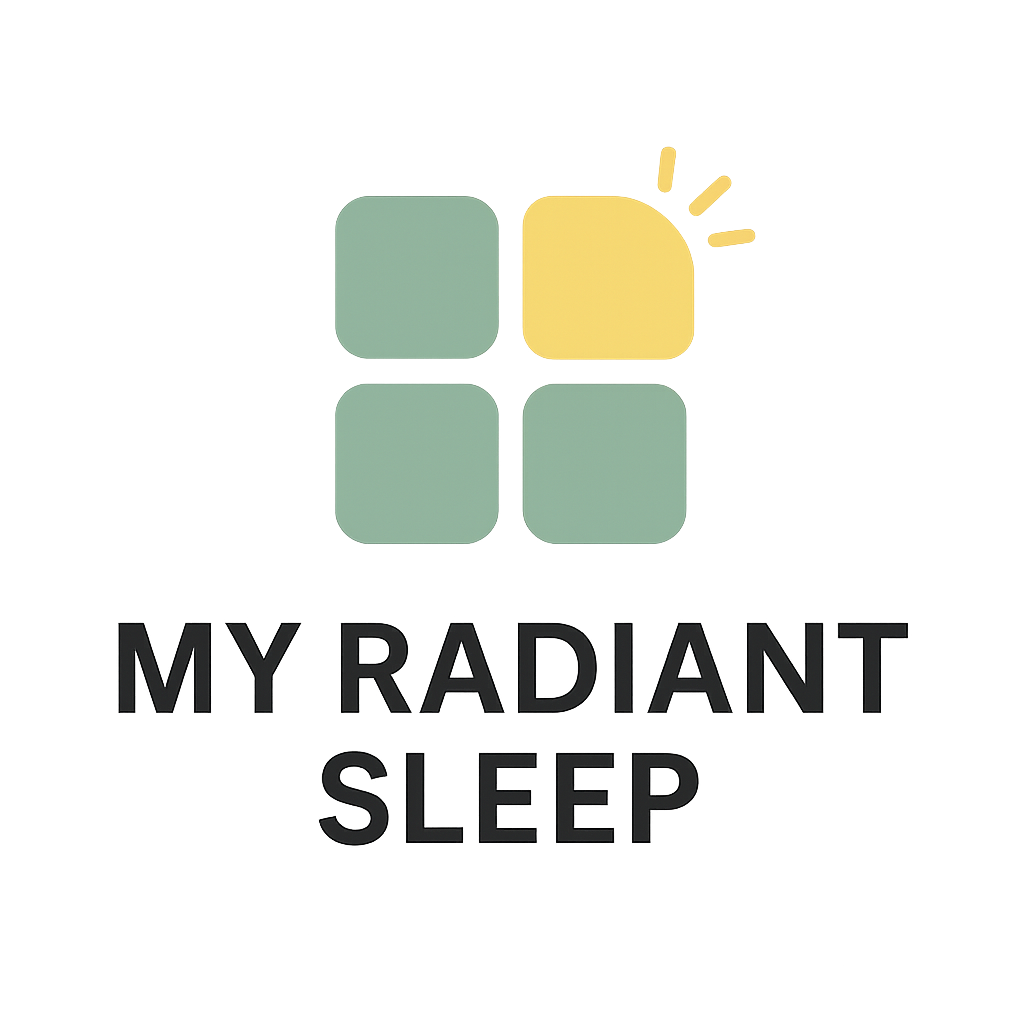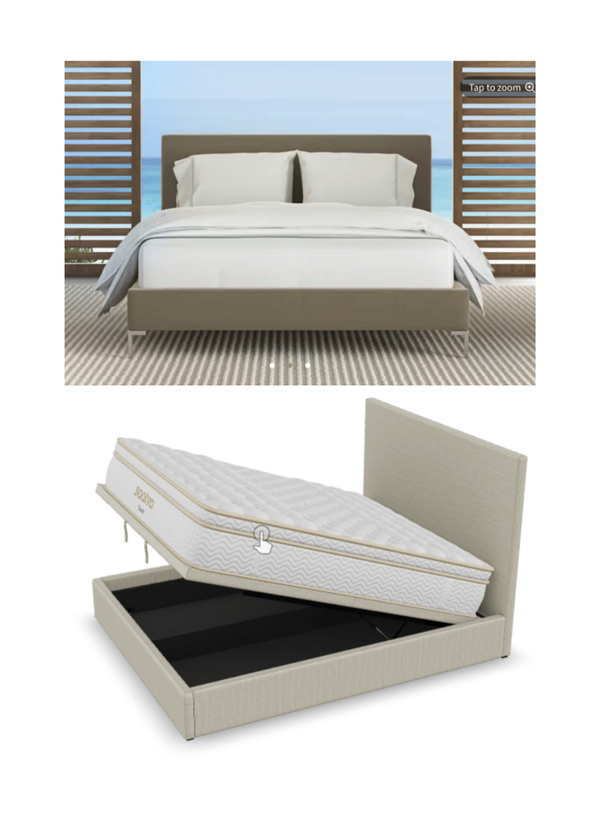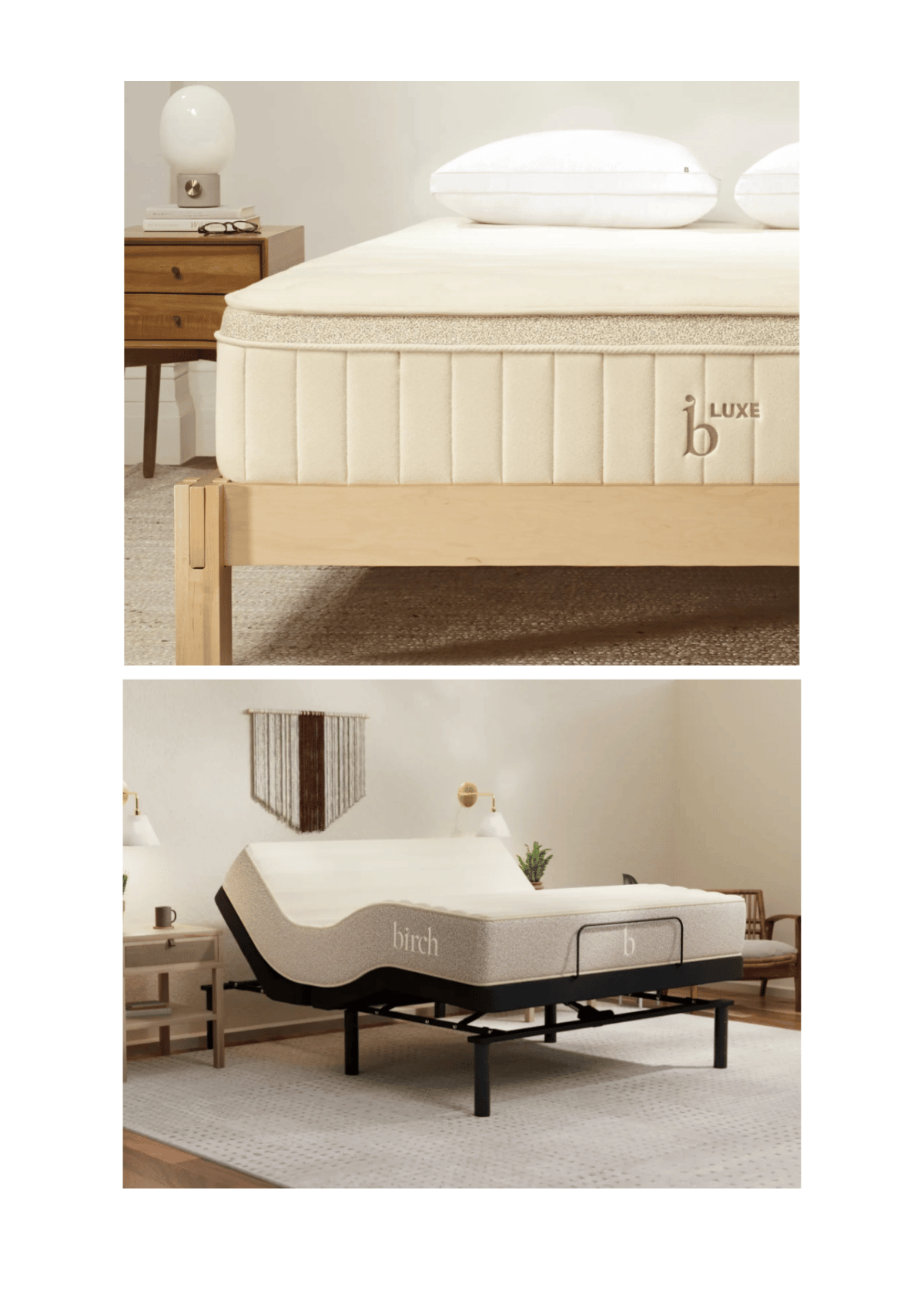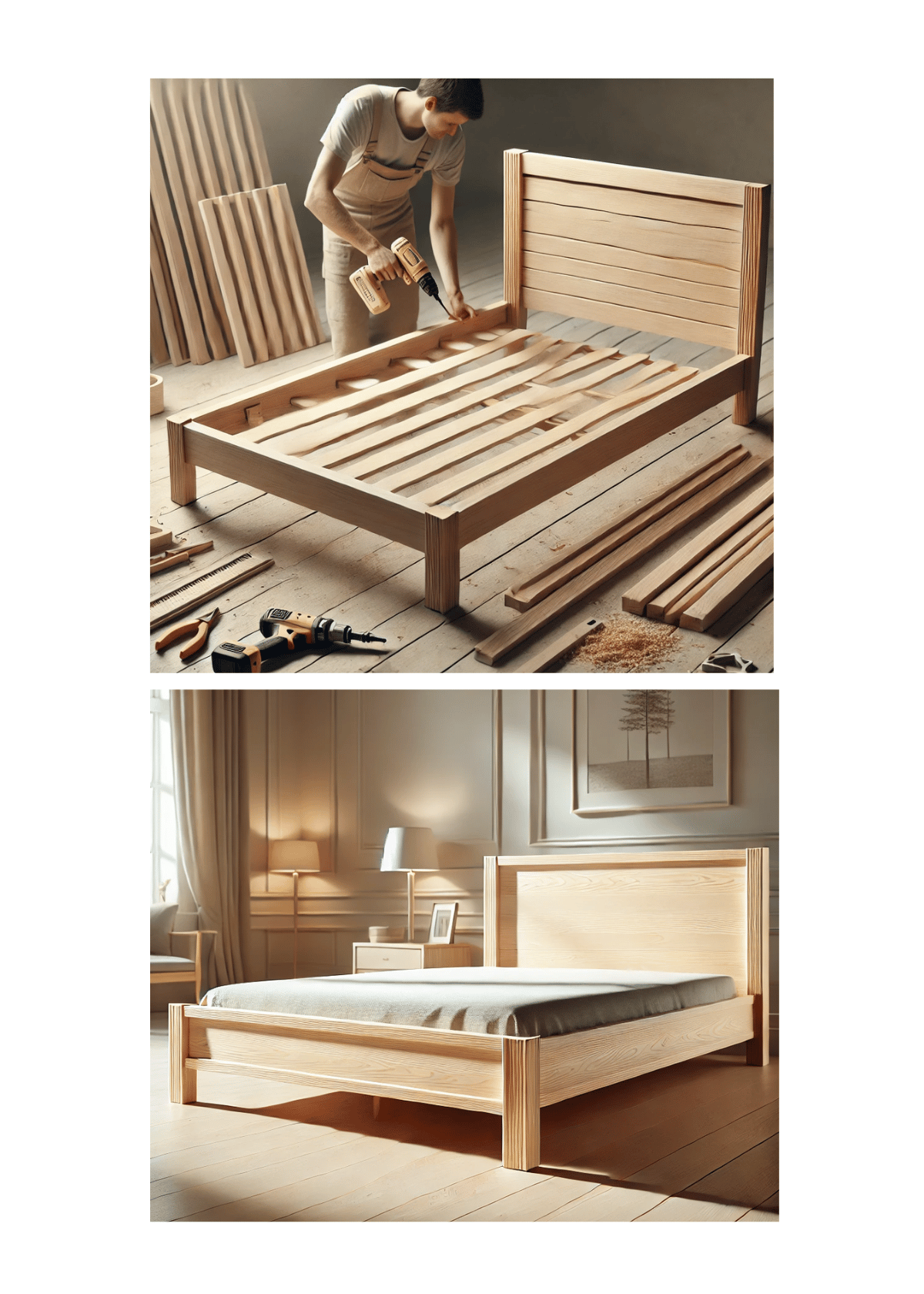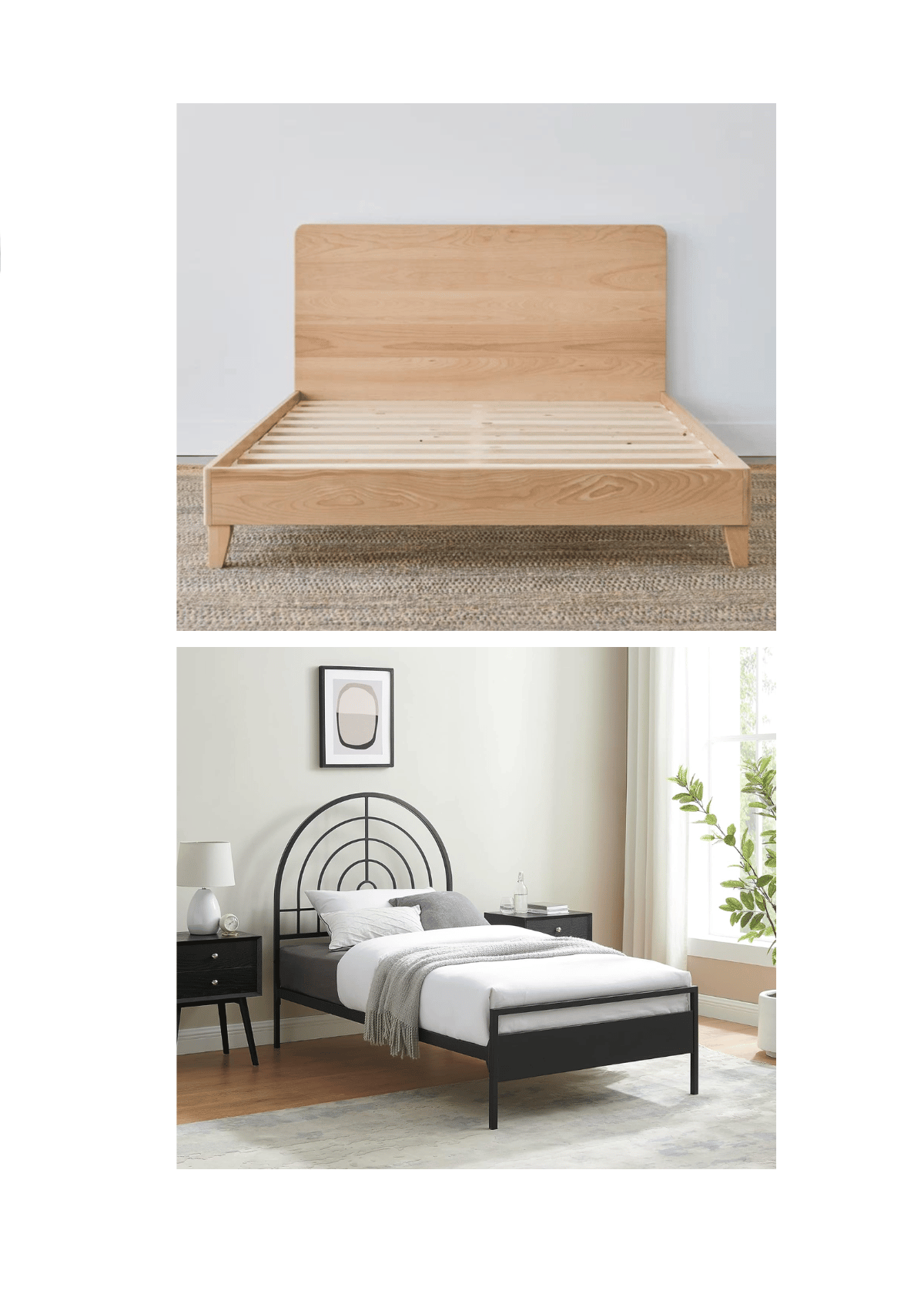(Last Update: 09/29/2025)
Could the secret to a transformative night's sleep lie in the structure of your bed?
The traditional Japanese Tatami bed frame is a fascinating contender for restful slumber.
These bed frames promise more than just aesthetic appeal. They match the minimalist elegance of ancient design with contemporary needs.
As we move into 2024, join us in exploring how a piece of furniture steeped in history could hold the key to unlocking unparalleled restfulness.
Discover the perfect blend of culture, comfort, and craftsmanship that defines the Tatami bed.
RAUMPA Japanese Floor Low Profile Platform Bed Frame
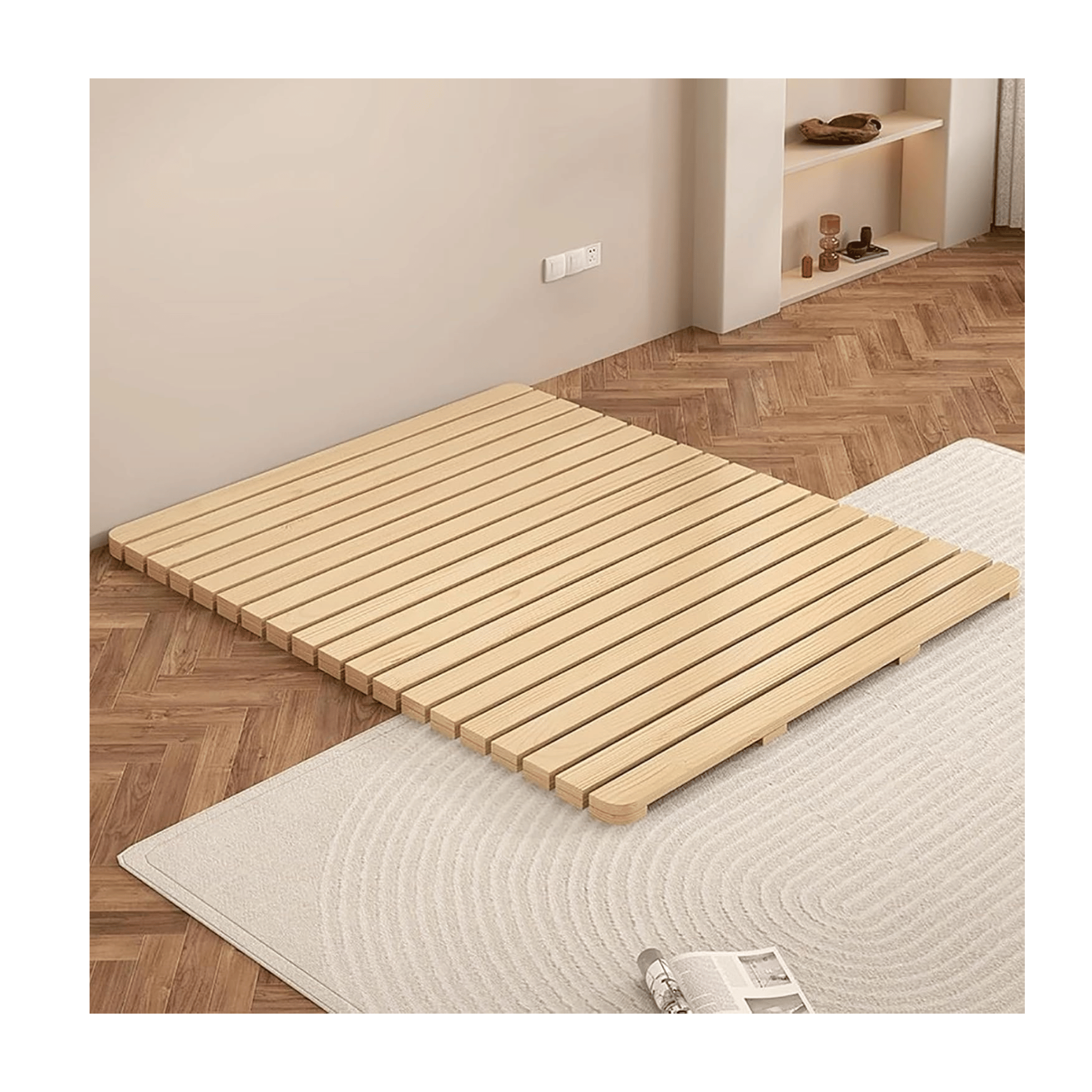
Price & rating: US$220–260;
Rating: 4.3/5.0
- Best for: Futon users, students, individuals with small bedrooms, or those seeking an authentic floor-sleeping experience.
The RAUMPA pallet bed is designed to capture the Zen of a Japanese tatami floor bed. This knot‑free wood base is essentially a fold‑up platform of slats that sits directly on the floor.
- There is no headboard or metal hardware – the pine boards roll out like a futon mat and can be folded away when you need the floor space.
- For minimalists or tiny‑home dwellers, this slatted pallet offers a way to sleep closer to the ground while still keeping your futon well‑ventilated.
- Solid slats keep your futon off the ground. Because the boards are close to the floor, the bed doesn’t creak when you move.
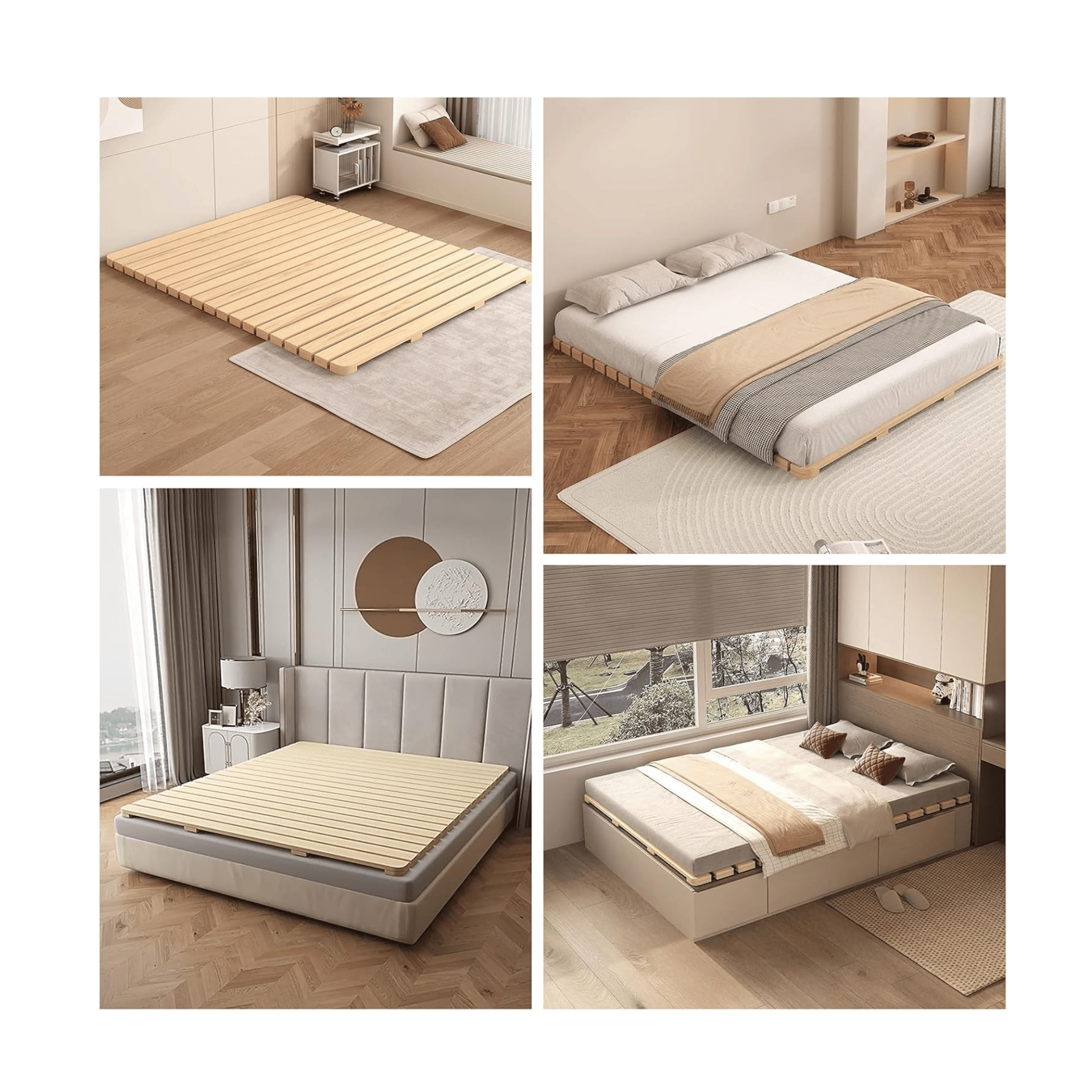
Materials & structure:
- Constructed from knot‑free hardwood slats joined together so the whole pallet can be rolled or folded. S
- ince there are no brackets or screws, assembly is straightforward, involving simply unrolling the slats and placing them on the floor.
Stability:
- Thick boards provide a flat surface for futons or thin mattresses. The interlinked design echoes the solid‑wood slat support used in Japanese tatami beds.
Portability:
- Folds into a compact roll; ideal for travellers or anyone who needs to reclaim floor space during the day.
Pros and Cons
Pros:
- Minimalist look; breathability prevents mould; no tools required; easy to store.
Cons:
- No under-bed storage or headboard; not suitable for standard tall mattresses.
My verdict:
- RAUMPA Japanese Floor bed frame offers a true tatami experience. Its low-profile slats emulate traditional platforms, providing breathability and portability. However, it lacks storage and cushion.
- Ideal for minimalists and futon users who value authenticity and space-saving flexibility over elevated comfort. It's a simple roll-up design that suits travel, but it also lacks a headboard.
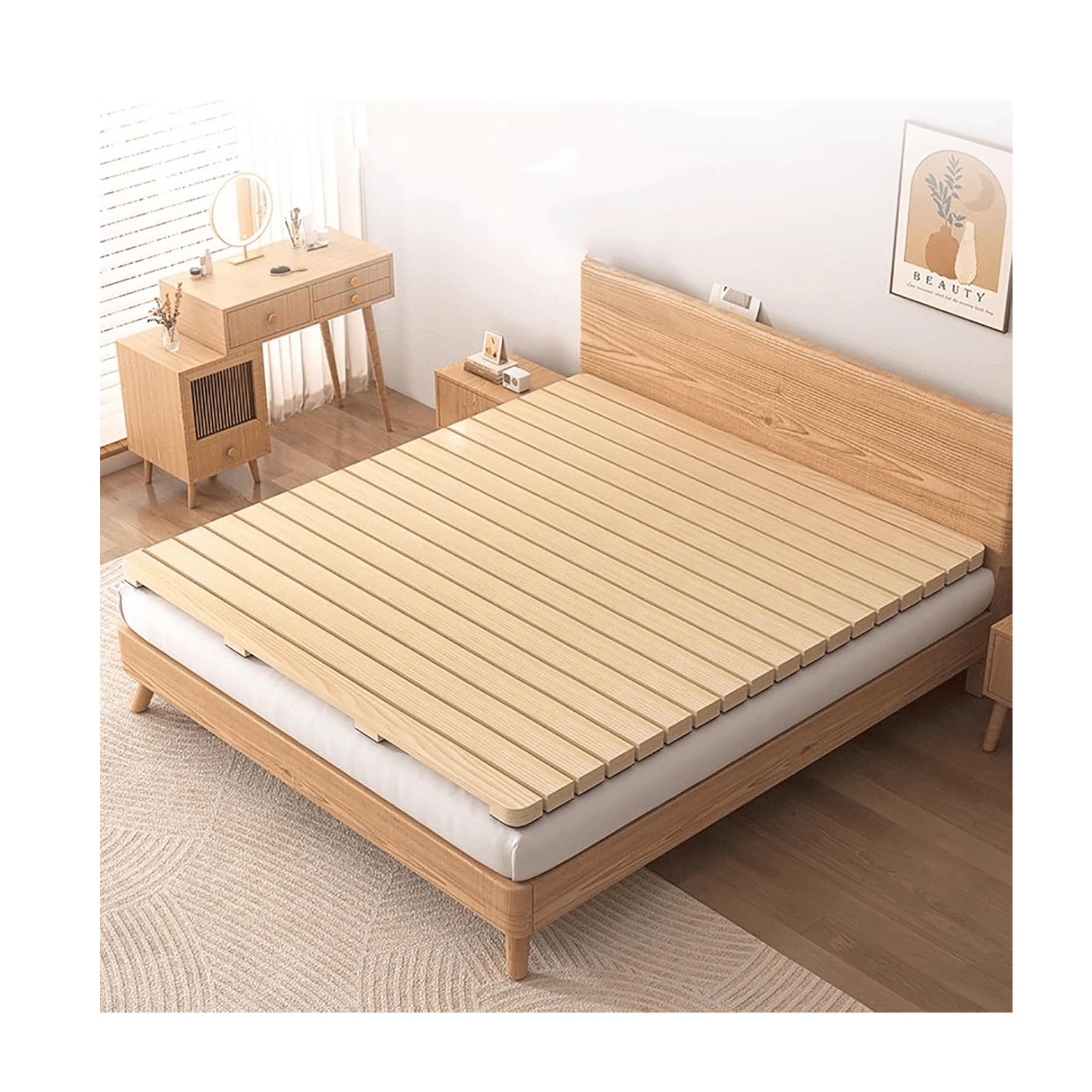
KITBRHOME Tatami Mat

Price: US$84.99–169.99;
Rating: 4.7/5.0
- Best for: Individuals seeking an authentic Japanese sleeping experience, meditation practitioners, or anyone looking for a natural floor mat.
Unlike a bed frame, this product is a genuine tatami mat. Traditional tatami mats are woven from rush grass (Igusa) and used either as floor coverings or under futons.
- This mat measures approximately 80 × 60 inches with a thickness of 0.5 inches, making it suitable for a queen-size futon.
- According to FULI Japan, natural Igusa controls humidity by trapping air; it keeps a room cool in summer and warm in winter
- The rush grass also absorbs odours and even toxins from the air
- These properties make sleeping on a tatami mat a distinct experience from sleeping on a foam mattress.
- Rush‑grass tatami also has a subtle fragrance that many people find calming. The mat’s finely woven surface resists wear and is durable
Because tatami is a natural product, colours and patterns vary slightly from one mat to another
Users should keep the mat in a dry, ventilated room and avoid running or jumping on it.

Cleaning is simple: wipe gently with a damp cloth.
. If you already have a tatami bed frame, adding this mat makes the sleeping surface more authentic.
Materials:
- Natural rush grass woven over a thin compressed‑straw core; offers slight cushioning and natural scent.
Climate control:
- Igusa absorbs moisture from the air and releases it, thereby helping to maintain a stable humidity and temperature.
Odour & toxin reduction:
- Rush grass can absorb unpleasant smells and certain chemicals
Durability:
- Dense weaving and quality rushes produce a smooth surface that withstands daily use
Care:
- Use in a dry room, avoiding high humidity. Wipe with a damp cloth. Store in a cool, ventilated place when not in use.
Pros and Cons
Pros:
- Authentic Japanese sleeping surface; breathable and hypoallergenic; doubles as a yoga or meditation mat.
Cons:
- Provides minimal cushioning; thickness may be too low for those used to Western mattresses.
My verdict:
- KITBRHOME Tatami Mat delivers authentic Japanese sleeping. Made from rush grass, it regulates humidity and absorbs odors.
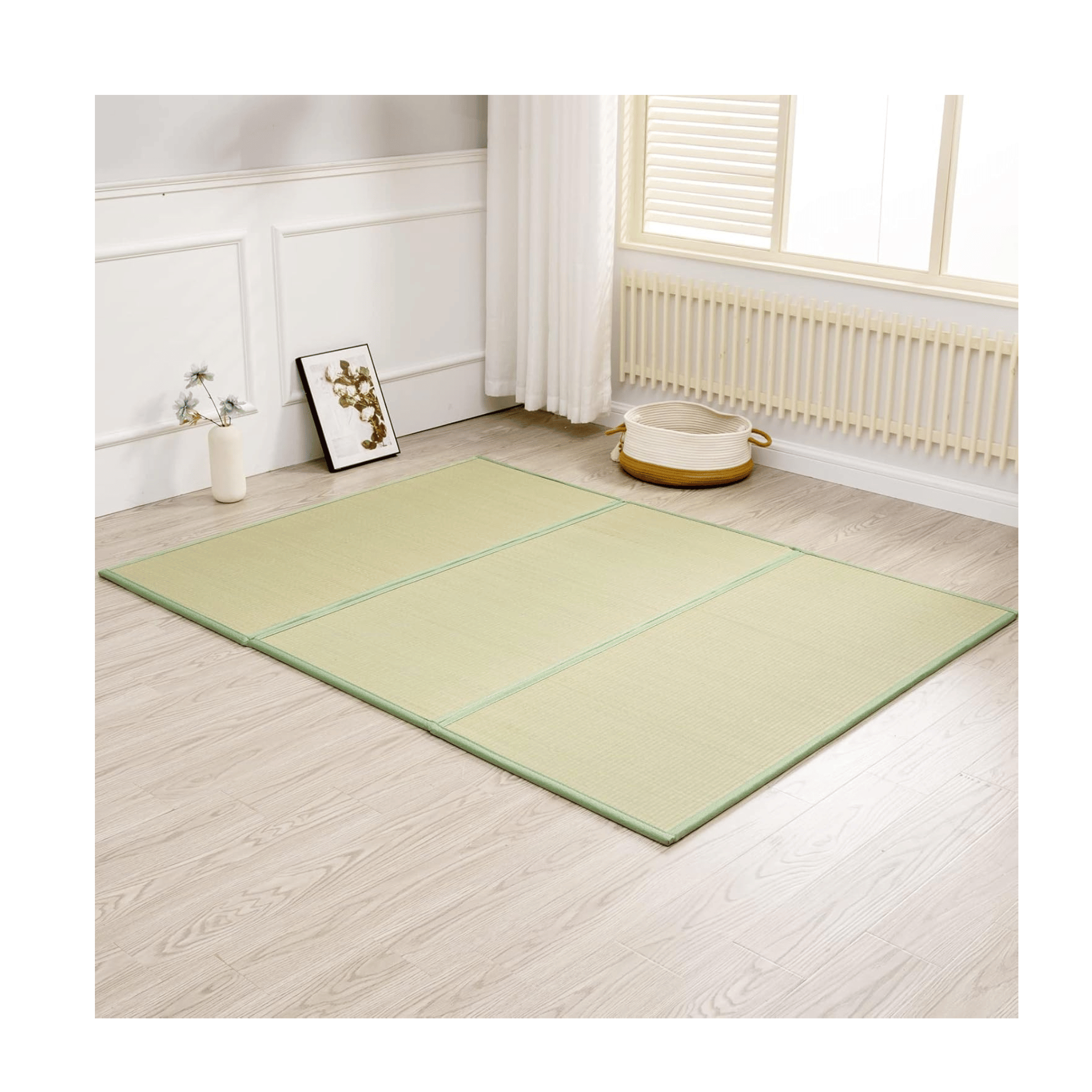
FHNI Japanese Tatami Mat Floor Bed

Price: US$139.99–219.99
Rating: 1/5.0
- Best for: Individuals who frequently relocate, RV or tiny home dwellers, or those seeking a robust yet portable tatami base.
The FHNI roll‑up slatted bed combines solid wood craftsmanship with a portable design. It is a modern update of the traditional tatami base: instead of a heavy platform, FHNI uses knotless solid‑wood slats that roll up for storage.
- According to the product description, the extra‑thick slats can support up to 2,200 lb – far more than most platform beds.
- This impressive load rating comes from the dense, moisture‑resistant lumber and reinforced concave baseThe slats are arranged with small gaps to allow air to circulate through your futon or mattress, reducing moisture buildup and mold.
- Because the whole base rolls up, set‑up is simply a matter of unboxing, unrolling, and placing your mattress on top.
- FHNI features two fabric straps to secure the slats together when packing it away.
- The minimal design means there are no squeaks or creaks, and the natural finish suits both modern and Zen‑inspired décor.
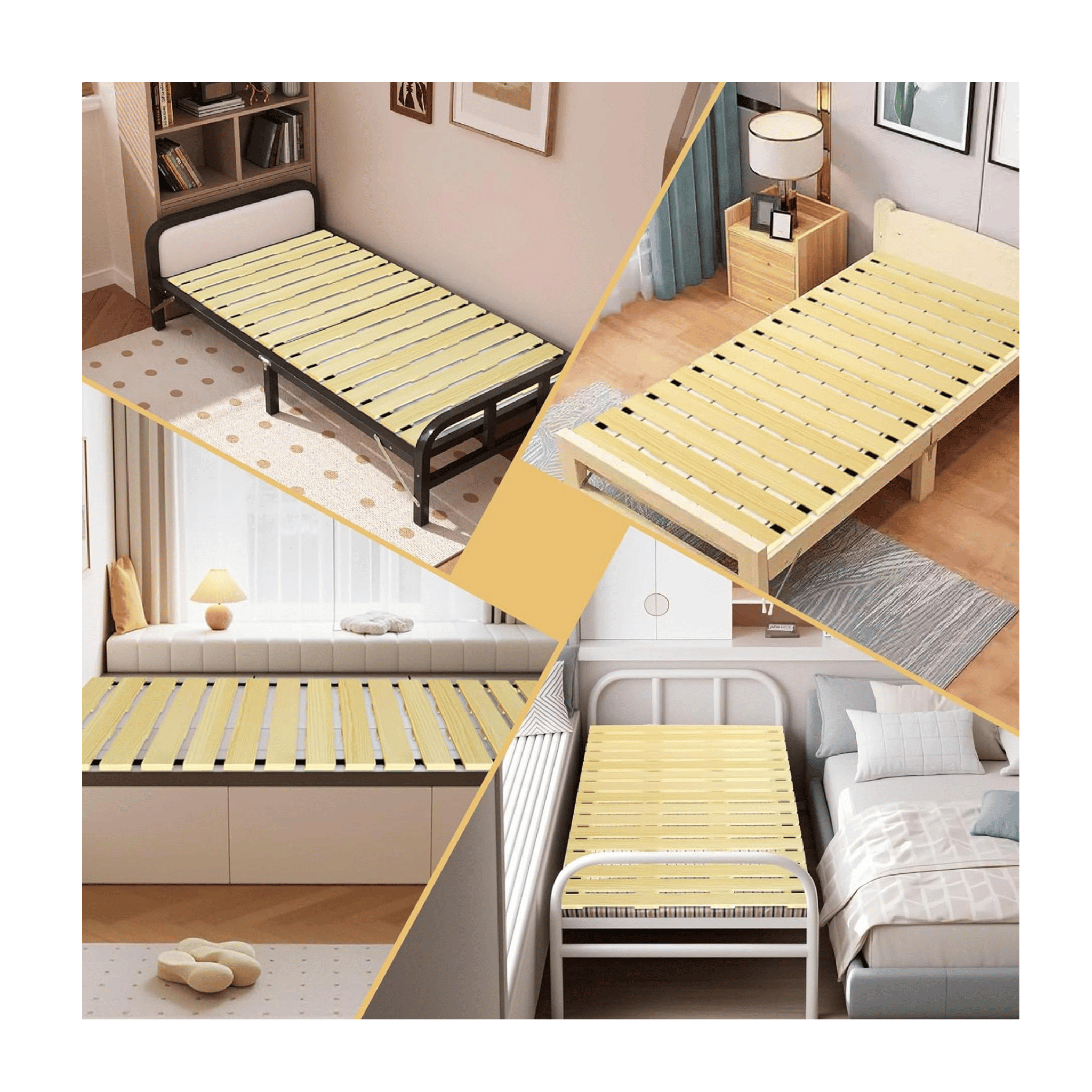
Construction:
- Roll‑up base made from knotless solid wood; slats are thicker than standard for extra strength.
Load capacity:
- Supports up to 2,200 lb thanks to thick slats and a reinforced concave base.
Moisture-proof design:
- The slatted construction and breathable materials reduce moisture and help prevent mold.
Portability & storage:
- Rolls up and includes two storage straps for easy carrying.
Pros and Cons
Pros:
- Extremely strong; breathable; quick to set up; compact for storage or travel.
Cons:
- No elevation for storage; lacks a headboard; may feel hard without a thick futon.
My verdict:
- With its low profile design, the FHNI roll-up slatted bed is a robust portable platform. Its knotless wood slats support up to 2,200 pounds and allow airflow. It rolls up for storage and includes straps.

Generic Tatami Folding Bed Frame

Price: US$169–339.99
- Best for: Futon users seeking a folding tatami platform, travellers, or anyone needing a space‑saving guest bed.
- There are no legs or headboard—this is a pure floor bed meant to be paired with a futon or thin mattress. Like other Japanese platform beds, the slats provide a firm surface while still allowing air to circulate.
- The frame is made from solid hardwood planks. When unfolded, the panels lie flat to create a broad support surface. Because it folds, owners can lean it against a wall when cleaning or travelling.
- The slat spacing mirrors the design of Japanese platform beds, as described by Tatamiroom: wooden slats spaced about two inches apart provide support for latex or memory-foam mattresses.
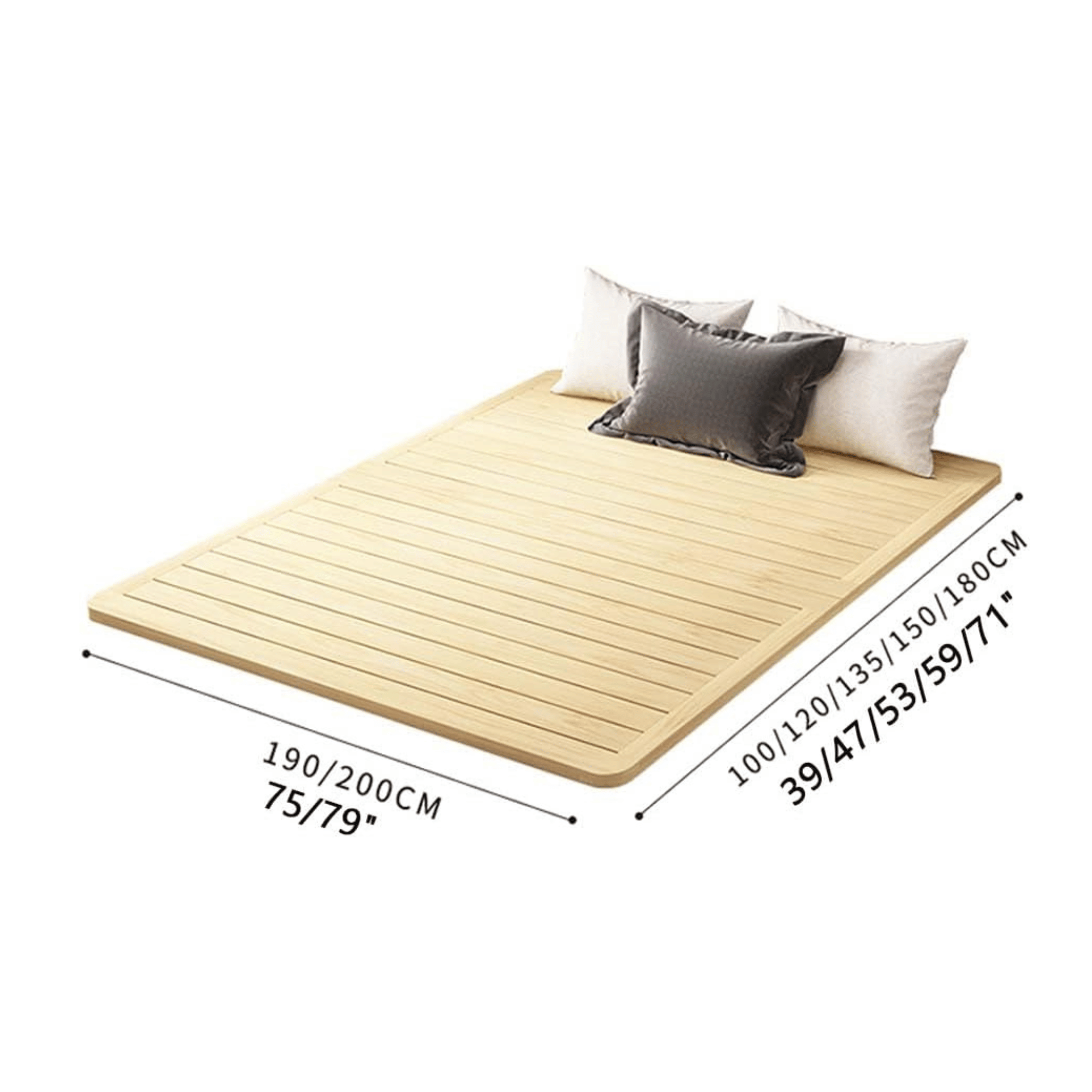
Materials:
- Solid hardwood panels connected with hinges; no metal hardware.
Portability:
- Folds in half; easy to transport or store vertically against a wall.
Low profile:
- Sits flush to the floor for a true tatami experience; ideal for futons or thin mattresses.
- Ventilation: Slat spacing promotes airflow beneath the mattress, reminiscent of traditional Japanese tatami beds.
Pros and Cons
Pros:
- Simple design; good ventilation; portable; budget‑friendly.
Cons:
- No storage space, limited aesthetics, and the weight rating is not specified.
My verdict:
- This folding tatami platform is a no-nonsense futon base. Its low-profile solid wood slats mimic traditional Japanese platforms.
- You can fold it up when you need floor space. There’s no headboard, elevation, or storage.

AllForWood Solid Wood Platform Bed
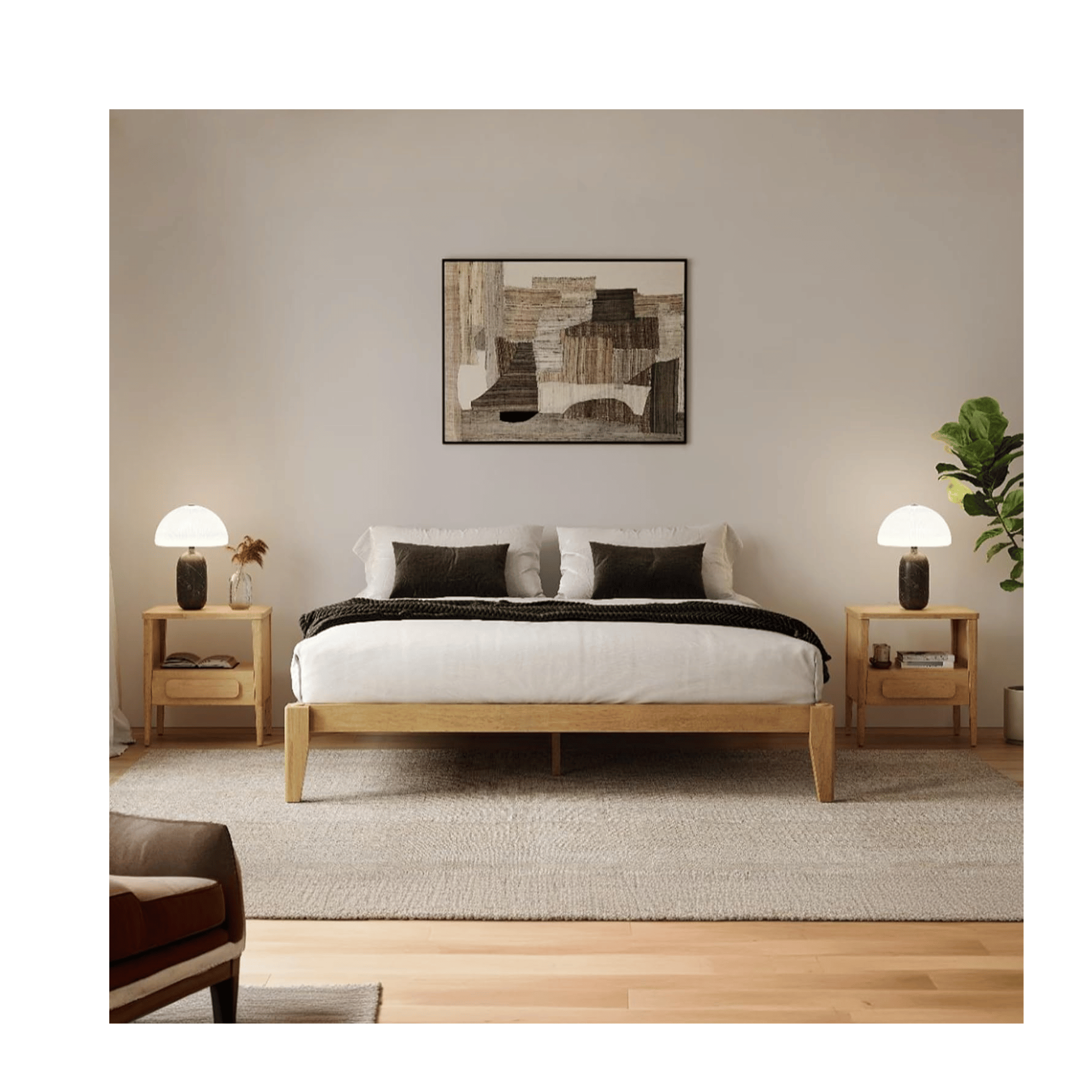
Price: US$329–399;
Rating:4.6/5.0
- Best for: Buyers seeking a modern platform bed with Japanese craftsmanship, yet still requiring a raised frame for standard mattresses.
AllForWood markets this bed as a minimalist platform that uses Japanese joinery rather than metal hardware.
- The bed arrives as interlocking hardwood rails and thick slats that simply slide into place, echoing the design of tatami platform beds described by Tatamiroom, where interlocking wood joint frames are assembled without brackets, and sixteen to eighteen wooden slats provide support.
- The AllForWood frame stands approximately 14 inches tall, allowing you to store boxes or baskets underneath.
- The joinery not only looks good but also reduces noise – there are no screws to creak or come loose.
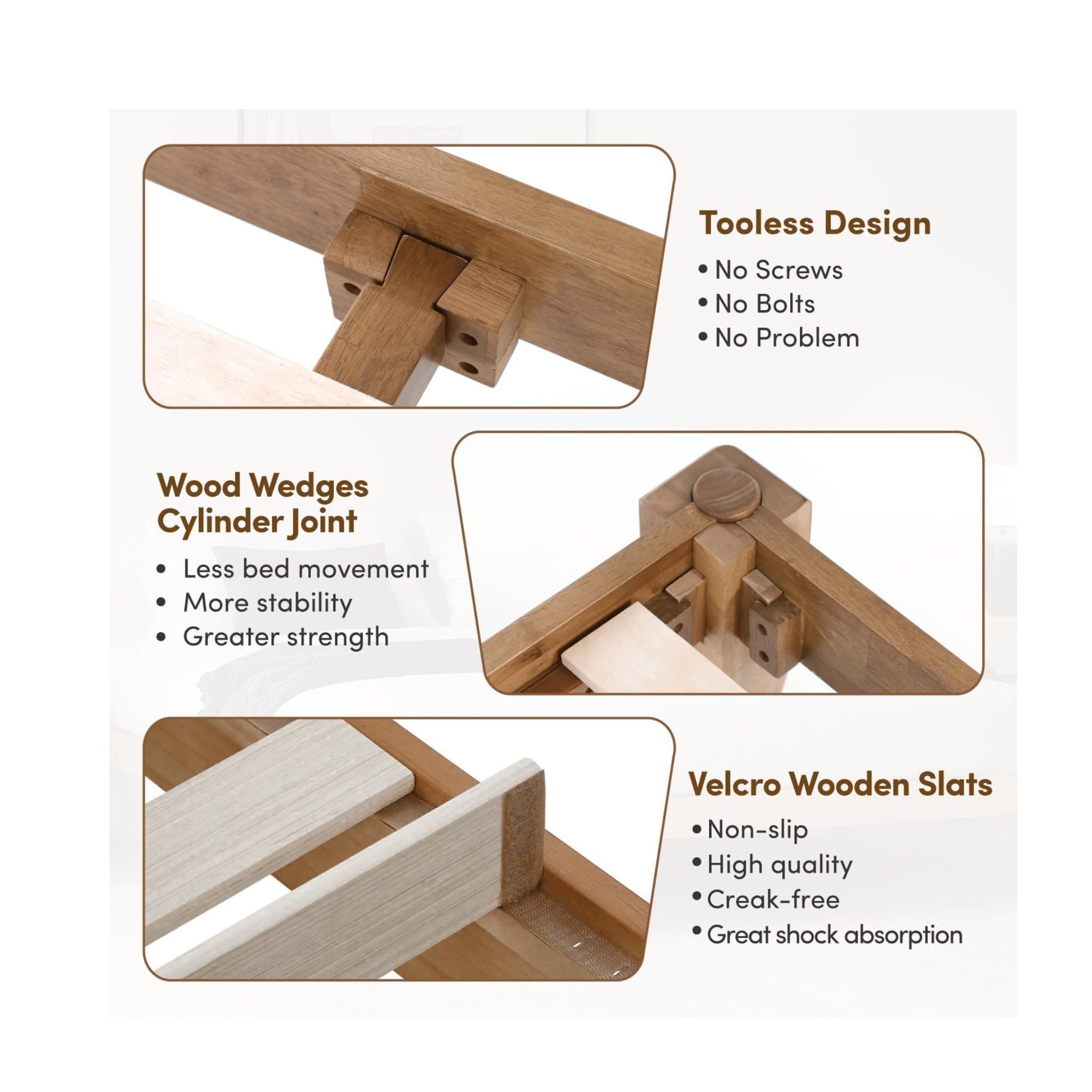
- Assembly usually takes about 15–30 minutes and requires no power tools. Since the frame lacks a headboard, it pairs well with a decorative wall tapestry or a separate headboard.
- Customers praise the sturdy feel and absence of squeaking, while noting that there is no way to attach a headboard.
Japanese joinery:
- Interlocking rails and legs assemble without screws or metal brackets; inspired by traditional tatami platforms.
Materials:
- Solid wood (often rubberwood or oak) finished in light oak or dark walnut; thick slats support modern mattresses.
Height & storage:
- Approximately 14 inches tall; under‑bed clearance for storage bins.
- Assembly: Tool‑free assembly; pieces slot together; takes about 30 minutes.
Pros and Cons
Pros:
- Quiet and sturdy thanks to joinery; minimalist aesthetic; real wood construction; storage space.
Cons:
- No headboard; the unit is heavy to move once assembled.
My verdict:
- AllForWood’s platform bed frame seamlessly blends traditional Japanese joinery with modern functionality. Its solid wood frame uses interlocking joints with sixteen slats, eliminating squeaks.

EMOOR Wood Slatted Low Platform Bed Frame
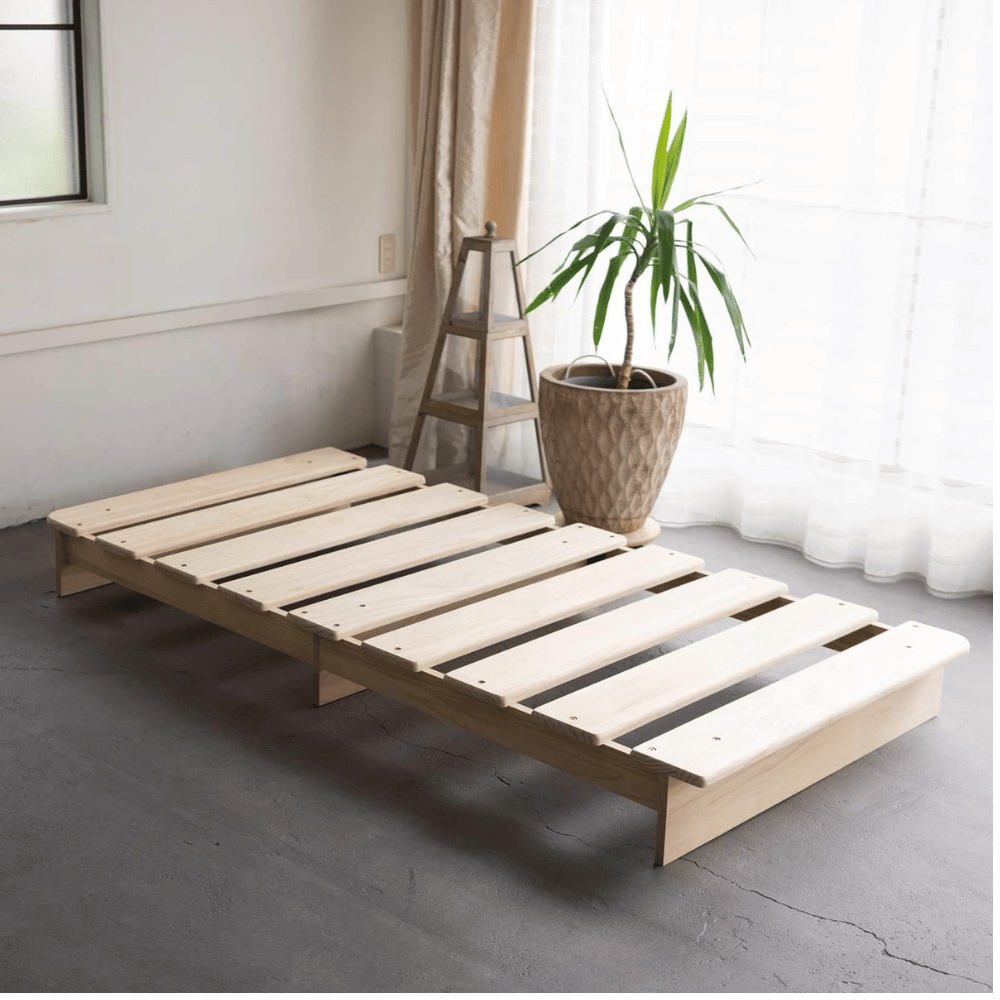
Unique Features & Sustainability
Eco-Friendly Wood:
The Queen frame is made with sustainably sourced wood, ensuring an eco-conscious choice for your home.
Innovative Slatted Design:
- The frame offers enhanced breathability for your mattress, extending its lifespan and maintaining its freshness.
- The EMOOR is available in Twin size, Twin XL, Full, Queen, King, and California King.
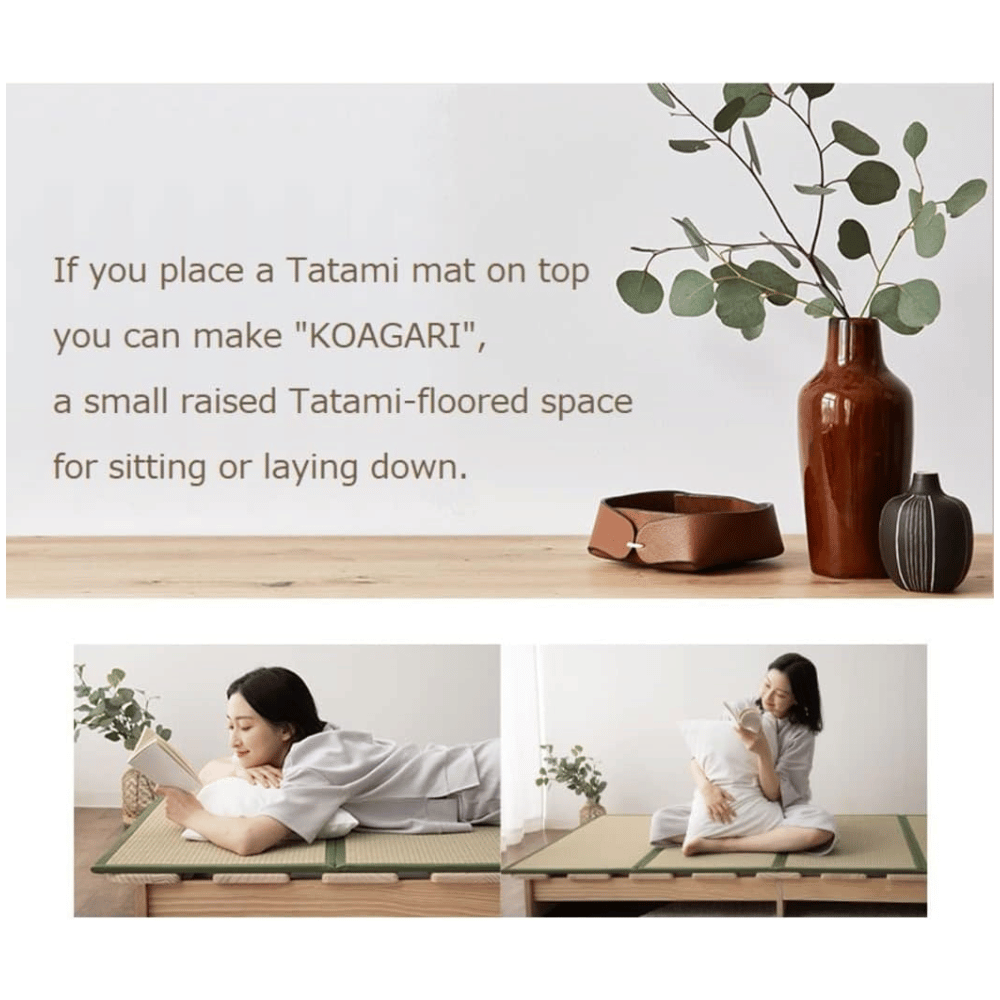
EMOOR’s OSMOS frame blends Japanese minimalism with modern convenience. It is a low-profile platform designed specifically for futons, yet versatile enough to accommodate any mattress.
- One of its standout features is adjustable height: the bed can be used without legs for a 2‑inch floor height, with short legs for 7 inches, or with extendable legs for a 12‑inch height.
- The highest setting offers under-bed storage, while the lowest provides an authentic floor-sleeping feel.
- GoTinySpace explains that EMOOR’s pine slats allow air to circulate through the mattress, eliminating the need for a box spring. The retro‑brown lacquered pine gives the frame a warm, natural look.
- The frame comes flat‑packed in a single box and includes an L‑shaped wrench; most people can assemble it in 15–30 minutes.
- Each pine slat is fixed into a solid pine frame that supports up to 440 lb. If you choose the 12‑inch height, there is enough room underneath for storage boxes or baskets.
How EMOOR Enhances Restfulness
Improved Airflow:
- The slatted base promotes air circulation, aiding in maintaining a balanced temperature and reducing moisture buildup for a more comfortable slumber.
Durability and Longevity:
- Crafted for resilience, the EMOOR bed withstands the test of time, offering sustained class and comfort.
Real Customer Reviews:
- EMOOR’s Wood Slatted low-profile platform beds receive a solid 4.3-star rating from users who highlight their value for money, ease of assembly, and positive impact on their slumber.
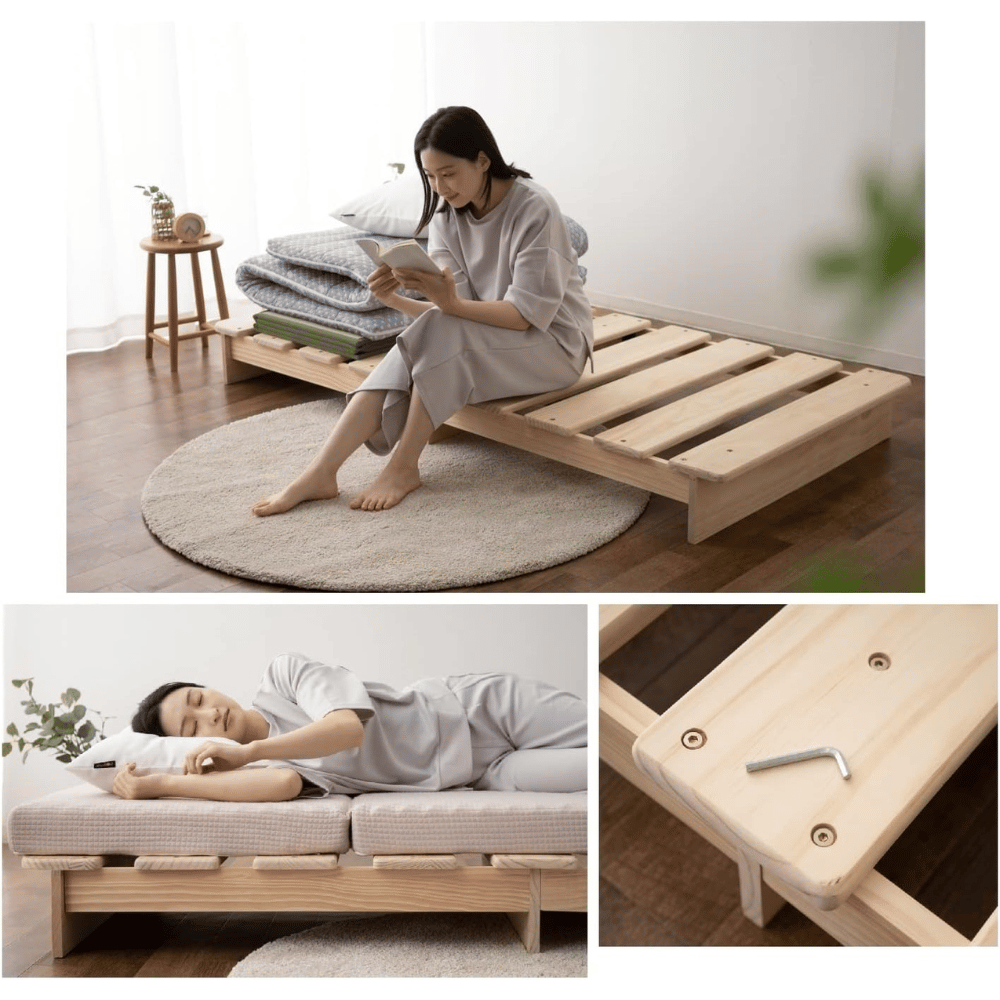
Bme Chalipa Wood Platform Bed

Key Features & Design Aesthetics
- Minimalist Design: Sleek, clean lines embodying a minimalist aesthetic's essence effortlessly complement any room decor.
- Solid Wood Construction: Crafted from high-quality, durable wood for a robust frame that promises longevity.
- Available Sizes: Twin, Full, Queen, King.

- The BME Chalipa is a raised platform bed that strives to blend Japanese simplicity with Western convenience.
- At 14 inches high, it resembles a modern platform bed more than a traditional tatami base. The frame features thick hardwood rails and a powder-coated iron support structure, allowing it to hold up to 800 lbs for king, queen, and full sizes.
- Massive square legs and a wide side rail give it a sturdy, grounded appearance. Although we were unable to access the full manufacturer description, a retailer’s product page explains that the bed uses LVL (laminated veneer lumber) slats to provide a rigid surface and eliminate the need for a box spring.
- Because the frame sits higher than typical tatami beds, there is generous space underneath for storage bins. Users also note that the natural wood grain and simple rectangular frame complement both minimalist and rustic décor.
- Assembly is straightforward: the large wooden rails bolt to the iron inner frame, and the slats rest on ledges. The result is a bed that feels solid yet still disassembles easily when moving.
Benefits of Choosing Bme Chalipa
Enhanced Sleep Quality:
- The solid hardwood design minimizes noise and movement, fostering a more restful night's sleep.
Durability and Ease of Maintenance:
- Solid construction and easy-to-clean surfaces ensure the bed frame remains a lasting fixture in your home.
What Users Love About It
- Boasting a 4.4-star rating from 395 reviews, users rave about the Bme Chalipa Bed Frame's perfect blend of style and sturdiness, its ease of assembly, and how it enhances the overall look and feel of their bedrooms.
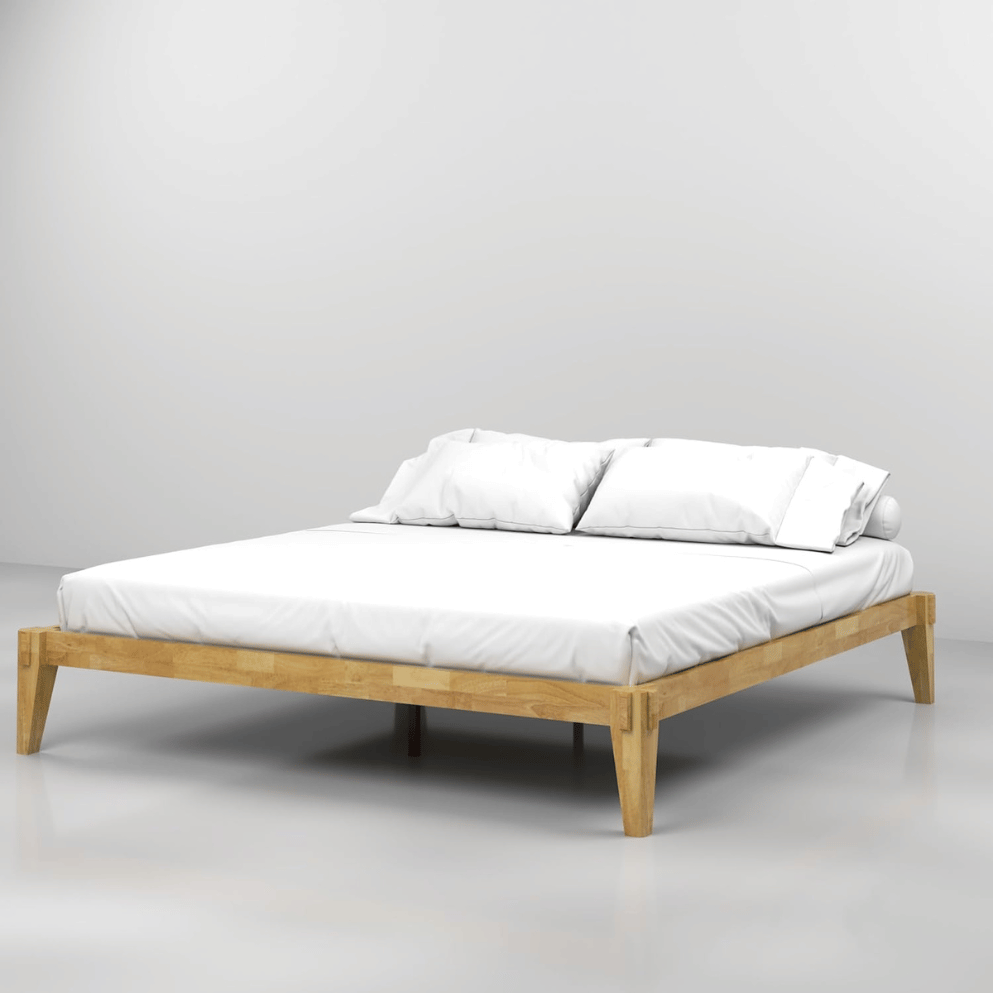
NTC Fly Wooden Bed Frame
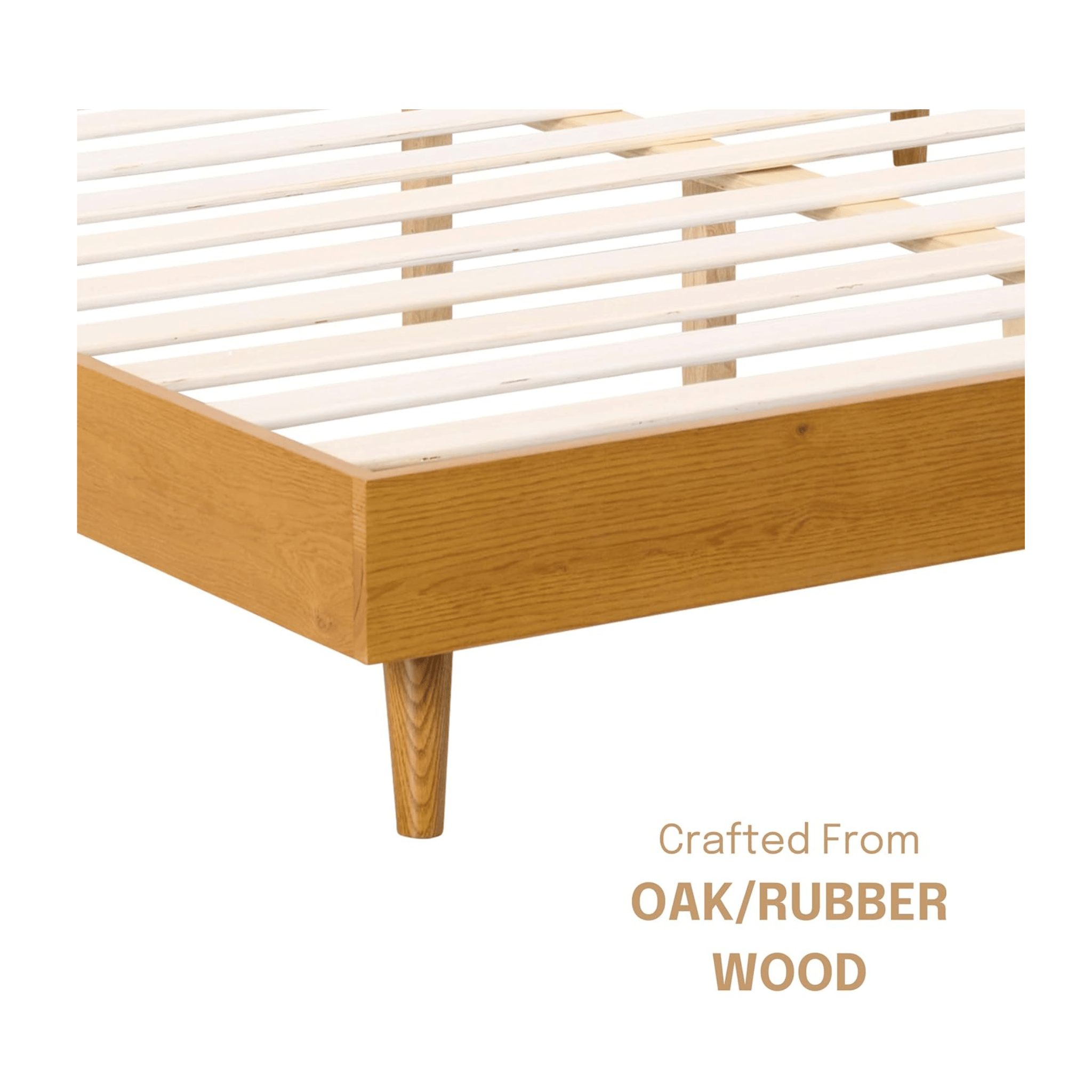
Price: US$199.99–254.99
Rating:4.3/5.0
- Best suited for: Buyers seeking a sturdy, quiet wooden platform bed with a rustic aesthetic and a generous weight capacity.
NTC’s Fly platform bed blends rustic materials with modern engineering. The foundation is built from solid oak and rubberwood rails connected by a central wooden support and topped with silent slats. These slats are designed to lock into place and prevent squeaks—a common feature in NTC’s line of beds.
- The manufacturer advertises a 1,000‑lb weight capacity, which exceeds the weight ratings of many budget platform beds.
- Although detailed product pages were inaccessible, descriptions from multiple retailers note that the bed utilizes wood joinery, along with an effortless assembly system, allowing the rails to slide together without complicated hardware.
Unlike tatami beds, the NTC Fly stands about 12 inches high on tapered legs, offering under‑bed storage.
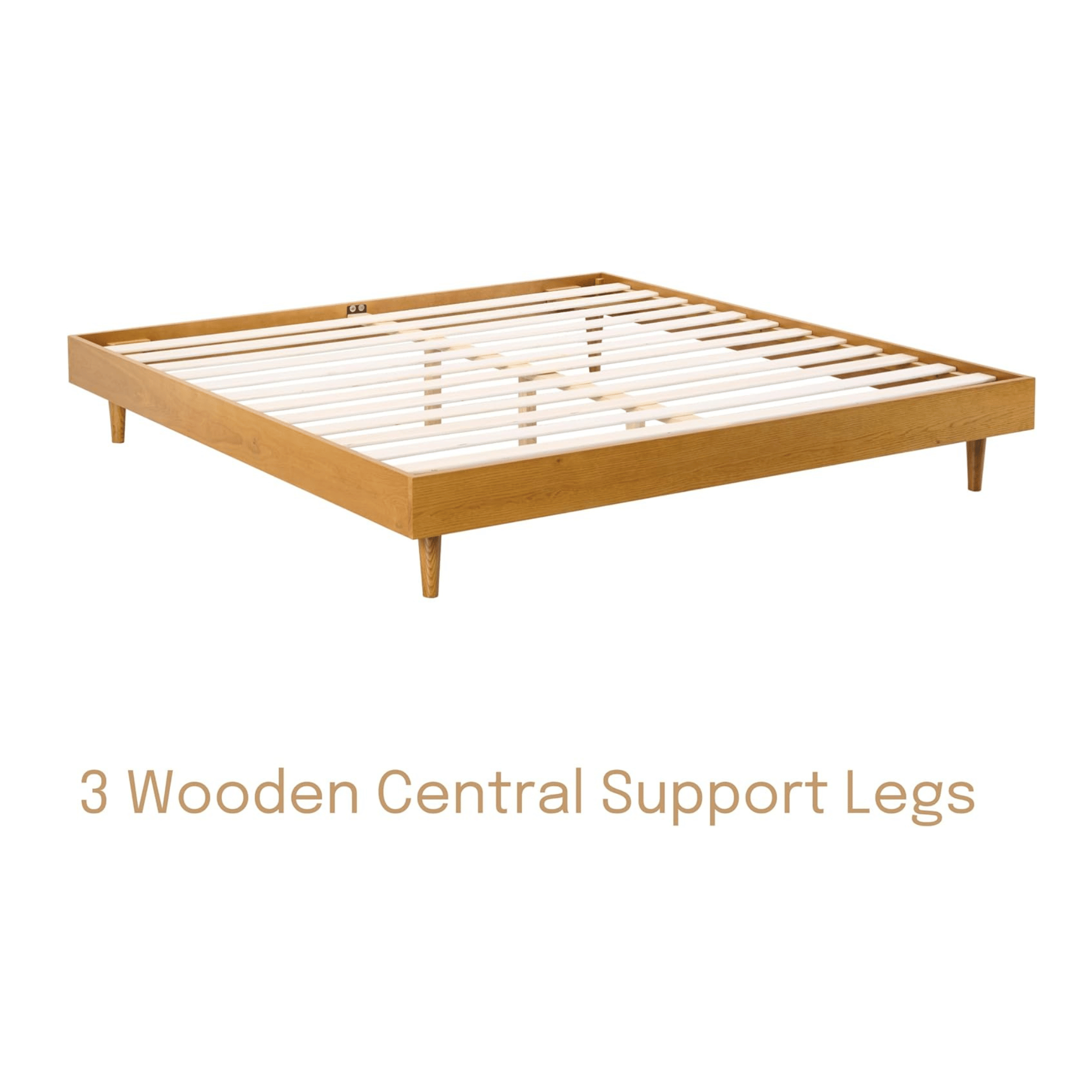
Materials:
- Combination of oak and rubberwood rails with a central support beam; finished in rustic oak or dark walnut.
Silent slats:
- Wooden slats designed to interlock and minimise noise; no metal components to squeak.
Load capacity:
- Advertised 1,000‑lb weight rating; suitable for heavy mattresses or multiple sleepers.
Height & storage:
- Approximately 12 inches tall; provides under‑bed storage without sacrificing stability.
Pros and Cons
Pros:
- High weight capacity, minimal noise, real wood construction, and simple assembly.
Cons:
- No headboard; heavy to move; information may be scarce due to limited retail listings.
My verdict:
- The NTC Fly platform bed channels Japanese simplicity. It utilizes interlocking solid-wood joints and sixteen slats to support memory foam or latex mattresses.
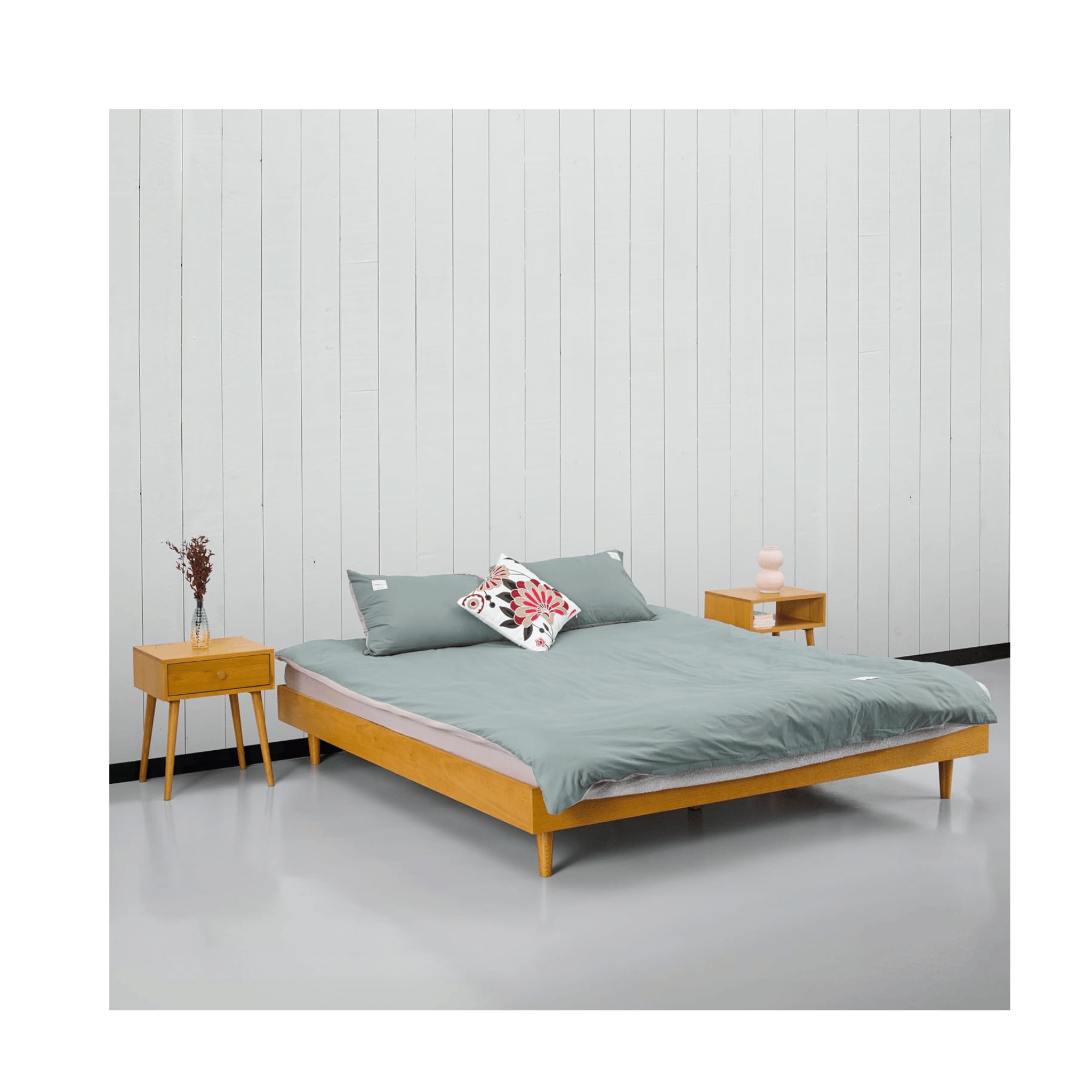
CONCLUSION:
The journey through the world of Tatami bed frames reveals a path to enhanced restfulness, marrying the art of traditional Japanese craftsmanship with modern design principles.
Whether you seek minimalist elegance, eco-friendly materials, or a serene sleeping experience, these frames offer a compelling solution.
As we've explored, the key to a better night's rest might lie in the unique blend of aesthetics, comfort, and functionality that Tatami bed frames offer.
Embrace the tranquility and rejuvenation of making such a timeless choice for your bedroom in 2024.
FAQs
What is a tatami bed frame?
- A tatami bed is a low, platform-style bed designed specifically to hold tatami mats, traditional Japanese flooring made from woven straw. Unlike frames made of particle board, these frames blend the minimalist aesthetics of Japanese design with modern functionality, offering a unique, grounded sleeping experience that emphasizes simplicity and natural materials.
Can you put a regular mattress on a tatami?
- You can put a regular mattress on a tatami mat. While tatami mats traditionally support futons, their firm, supportive surface is also suitable for regular mattresses. This combination can enhance air circulation around the mattress, providing a comfortable and restful sleep environment.
Why are tatami mats so expensive?
- Tatami mats are expensive due to their meticulous craftsmanship, quality materials, and cultural significance. Made from natural straw and woven rush grass, the production process is labor-intensive, ensuring durability and comfort. Their role in a traditional Japanese home adds value and authenticity, reflecting their cultural heritage.
